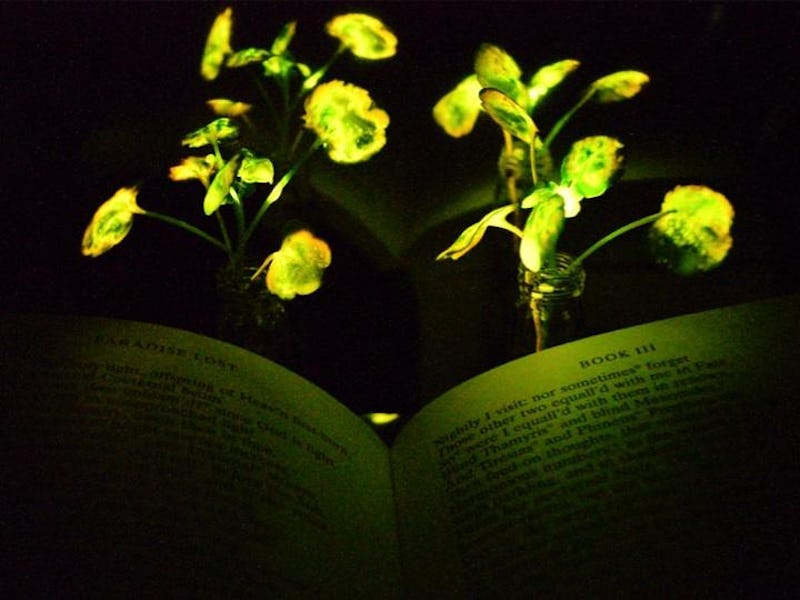Glowing Plants Will Replace Lights, Make World Like 'Avatar', Says Study
"The vision is to make a plant that will function as a desk lamp."

During the nearly three-hour ride that is Avatar, James Cameron builds a strange world filled with mountain banshees, sex tails, and forests pulsating with bioluminescence. If you’re a regular Jake Sully yearning for the world of Pandora, you don’t need to wait much longer for your life to become more Avatar-like: On Wednesday, scientists reported that they’re already working on creating real plants that glow like the fauna of the film, which could one day fill up your home, making you one with the Na’vi.
The scientists from MIT and the University of California, Berkeley announced in NANO Letters that they’ve created a new way make plants glow. This method, they explain in their paper, tweaks plants to give off visible light emissions and is a much more efficient technique than previous methods, which relied on genetic engineering. Ultimately, they write, their discovery could be scaled up to reduce our reliance on artificial lighting.
A world like Pandora is within reach, say scientists.
The plants that this team has been able to make glow so far include arugula, kale, spinach, and watercress. During the initial experiments, the scientists were able to make these salad greens glow for 45 minutes, but by the time of the paper’s publishing, the were able to make them glow for up to three and a half hours.
The watercress, in particular, produced a level of brightness comparable to half of a commercial one-microwatt LED light — making it 100,000 times brighter than previously genetically engineered tobacco plants.
The plants are able to glow because they are infused with luciferase, the enzyme responsible for making fireflies glow. In the reaction, luciferase interacts with a molecule called luciferin to create light, and another molecule called co-enzyme A allows the process to happen by removing the reaction byproduct that can inhibit glow. So, the researchers packaged these three molecules into nanoparticles and poured them into a chemical solution.
Putting the plants into this solution and hitting them with high pressure allows the particles to enter the tiny pores of the plants, and once they ge there, biological magic happens: luciferin is released and interacts with luciferase, and suddenly the chemical reaction causes the plants to glow, just like the forest where Neytiri and Jake Sully hooked up.
While still in the early stages, the scientists hope that one day this method can be used to replace traditional electric lighting, filling our spaces with indoor plant lighting and trees that act as self-powered streetlights. Plants are ideal candidates for turning into natural lightbulbs, the researchers note, because they independently generate and store energy as well as kickstart their own self-repair.
“The vision is to make a plant that will function as a desk lamp — a lamp that you don’t have to plug in,” said study co-author and MIT chemical engineer Michael Strano, Ph.D., in a statement.
“The light is ultimately powered by the energy metabolism of the plant itself.”